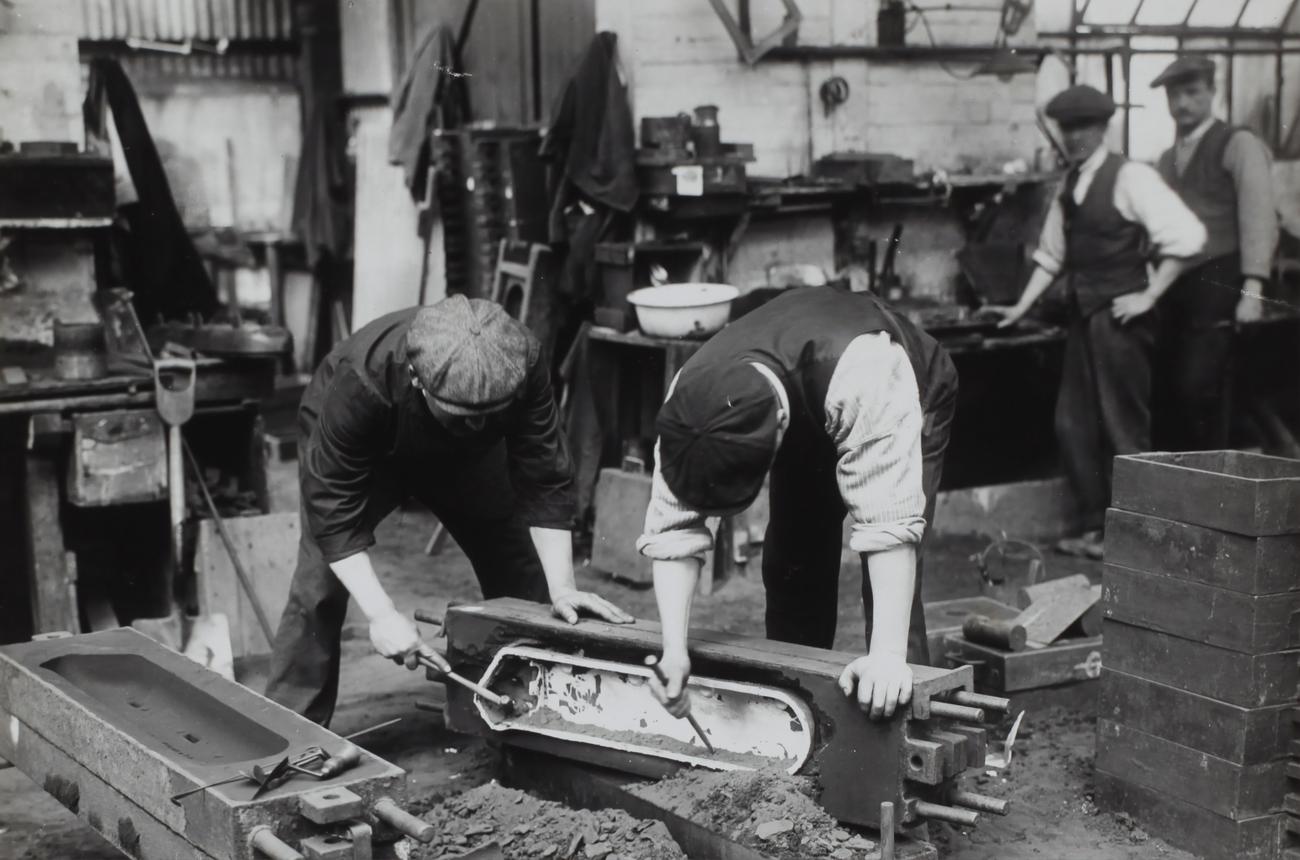If you’ve ever gazed at the night sky, mesmerized by the sheer power and grace of a rocket piercing through Earth’s atmosphere, then the captivating world of rocketry must have always fascinated you. But have you ever wondered about the humble beginnings of these awe-inspiring machines? Brace yourself for a journey back to the past, where facts about the intricate and incredible rocket steam engines await your eager mind. Prepare to be amazed as we unravel the captivating tales and enlightening details of the often overlooked pioneers who paved the way for the marvels of modern rocket engines.

Facts about the Rocket Steam Engine
The Rocket steam engine, invented by Robert Stephenson in 1829, holds a remarkable place in the history of locomotives. With its groundbreaking innovations, it became the pinnacle of steam-powered locomotion during its time. Let’s dive into some intriguing facts about this remarkable invention.
One of the most fascinating aspects of the Rocket is that it is widely regarded as the world’s first modern steam locomotive. Its design incorporated several revolutionary elements that paved the way for future locomotives. The Rocket featured a tall smokestack chimney and a cylindrical boiler, marking a departure from the traditional design of locomotives of that era. This unique configuration allowed for improved combustion and better heat transfer, ultimately enhancing the efficiency and power of the engine.
A crucial reason why the Rocket’s innovative design proved to be a turning point in steam engine technology was its success in the Rainhill Trials. These trials were organized by the Liverpool and Manchester Railway to choose the locomotive design for their railway. The Rocket emerged victorious, demonstrating its superiority over competing models and marking a shift in the perception of locomotives as a viable means of transportation. This triumph firmly established the Rocket as a symbol of progress and innovation in the field of steam engines.
It’s important to note that rocket engines, as used in space travel, are fundamentally different from steam engines. While they both operate on the principle of using expanding gases to generate thrust, the mechanisms and propellants they employ are distinct. Steam engines, including the Rocket, generate power by heating water to produce steam, which in turn drives pistons and turns the locomotive wheels. Rocket engines, on the other hand, use combustion of chemical propellants and the expulsion of high-velocity exhaust gases to generate thrust in a vacuum environment.
As is often the case with significant inventions, the Rocket was built on the foundation of earlier designs. The work of George and Robert Stephenson, Robert’s father, influenced the Rocket’s development. Their expertise and experience in steam engine and locomotive design played a vital role in shaping the innovative features of the Rocket. This familial collaboration and the incorporation of prior knowledge were integral to the success and impact of this groundbreaking locomotive.
One remarkable achievement of the Rocket was its role in powering the first inter-city passenger train. The successful implementation of the Rocket on the Liverpool and Manchester Railway opened up new possibilities for transportation and ushered in a new era of connectivity. This achievement not only showcased the power and reliability of locomotives but also laid the foundation for the expansion of railway networks, transforming the way people and goods were transported.
Today, the Rocket is preserved and proudly displayed at the Locomotion Museum in Shildon, England. This iconic relic serves as a reminder of the engineering marvels that shaped the history of steam engines and the impact they had on the world. It stands as a testament to the ingenuity and ambition of visionaries like Robert Stephenson, who forever changed the course of transportation with their creations.
In conclusion, the Rocket steam engine is a splendid example of innovation, excellence, and progress in locomotive engineering. Its remarkable design, victorious performance in the Rainhill Trials, and pivotal role in connecting cities through railways make it a truly fascinating piece of history. The Rocket’s influence on subsequent locomotive designs and its place in the development of steam engine technology solidify its position as an iconic symbol of the industrial revolution. As we appreciate the modern marvels of rocket engines, it’s essential to acknowledge the foundational contributions of remarkable creations like the Rocket steam engine.
“The Rocket steam engine revolutionized locomotion, securing its place as the world’s first modern steam locomotive.”
If you’re fascinated by space exploration and want to learn more about the incredible technology behind it, you won’t want to miss these mind-blowing facts about the rocket. From its awe-inspiring size to its immense power, the rocket is a true marvel of human engineering. Click here to delve into the world of rockets and discover just how they enable us to reach the stars: facts about the rocket.
Facts About the Rocket Steam Engine
Did you know that the rocket steam engine played a crucial role in the early development of steam-powered transportation? This incredible machine was a true testament to human ingenuity and engineering prowess. If you’re curious to learn more about this fascinating invention, click here for some mind-blowing rocket steam engine facts. Prepare to be amazed by its power, efficiency, and revolutionary impact on transportation.
Now, let’s delve further into the topic and explore the captivating world of rocket steam engines. Discover interesting facts, historical context, and technological advancements by clicking on this link: rocket steam engine information. Unveil the secrets behind this remarkable innovation and gain a deeper appreciation for the pioneers who dared to dream big and revolutionize the world of transportation.
So, whether you’re a history enthusiast, a steam engine aficionado, or simply intrigued by the wonders of human innovation, make sure to check out these incredible resources. Embark on a journey of knowledge, explore the depths of steam-powered transportation, and satisfy your curiosity by clicking on the hyperlinks provided above.
The Incredibly Innovative Stephenson’s Rocket: A Steam Train Like No Other
[youtube v=”3woUopc1ZS4″]
The development of railways was revolutionized by the groundbreaking invention of Stephenson’s Rocket, a remarkable steam train that boasted a design unlike anything seen before. With its unique features and incredible engineering, this locomotive left an indelible mark on transportation history. Let’s delve into the fascinating details of this iconic machine.
A Design Ahead of Its Time
Stephenson’s Rocket sported a tall smokestack chimney and a cylindrical boiler, both of which played a vital role in enhancing combustion efficiency and heat transfer. These innovative design elements set the locomotive apart from its predecessors, making it a truly exceptional piece of engineering.
Triumph in the Rainhill Trials
The Rainhill Trials, a competition in 1829 to determine the best locomotive design for the Liverpool and Manchester Railway, became the platform for Stephenson’s Rocket to showcase its superiority. Its exceptional performance during these trials transformed the perception of railways, proving that they were a viable and efficient mode of transportation.
The Distinction Between Rocket Engines and Steam Engines
It is crucial to distinguish between rocket engines and steam engines, as they operate on different mechanisms and fuels. While rocket engines rely on propellants stored onboard, steam engines like Stephenson’s Rocket generate power through the controlled release of steam. This differentiation is critical in understanding the ingenuity behind the Rocket’s design and its significant impact on locomotive engineering.
Pioneering Minds and Influences
The creation of Stephenson’s Rocket could not have been possible without the skills and expertise of George and Robert Stephenson. These visionary engineers were pioneers in the field of steam engine and locomotive design. Drawing inspiration from earlier prototypes and incorporating their own innovative ideas, their influence is evident in the iconic Rocket.
Powering the Path to Progress
The most remarkable feat of Stephenson’s Rocket was its role in propelling the first inter-city passenger train. This groundbreaking achievement laid the foundation for the expansion of railway networks and the development of efficient transportation systems worldwide. The Rocket truly changed the course of history and remains an enduring symbol of progress and industrial revolution.
A Testament to Innovation
To this day, the impact of steam engines on transportation is commemorated by the display of Stephenson’s Rocket at the Locomotion Museum in England. This remarkable locomotive serves as a constant reminder of the pioneering spirit and ingenuity that shaped the world we live in.
In summary, Stephenson’s Rocket stands as a testament to human innovation and engineering excellence. Its exceptional design, triumph in the Rainhill Trials, and significant contributions to the development of railway networks have solidified its position in history. The Rocket continues to inspire awe and appreciation for the power of human ingenuity, marking a remarkable milestone in the evolution of transportation.
FAQ
Q: Who invented the Rocket steam engine?
A: The Rocket steam engine was invented by Robert Stephenson in 1829.
Q: What made the Rocket steam engine the most advanced locomotive of its time?
A: The Rocket steam engine incorporated several innovations, making it the most advanced locomotive of its time.
Q: Is the Rocket considered the world’s first modern steam locomotive?
A: Yes, the Rocket is widely considered to be the world’s first modern steam locomotive.
Q: What were some of the components featured in the Rocket steam engine?
A: The Rocket steam engine featured components that later became standard on future locomotive designs.
Q: Is a rocket engine the same as a steam engine or turbine?
A: No, rocket engines are fundamentally different from steam engines and turbines.
“`json
“`
- China II Review: Delicious Food & Speedy Service - April 17, 2025
- Understand Virginia’s Flag: History & Debate - April 17, 2025
- Explore Long Island’s Map: Unique Regions & Insights - April 17, 2025
















